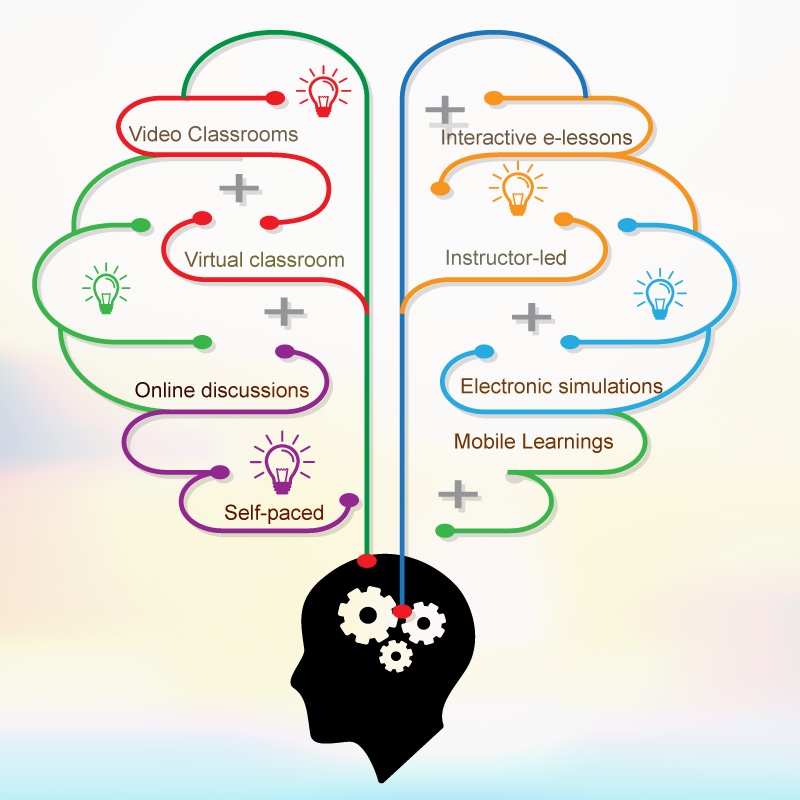Deciding On The Type Of eLearning Content You Should Create
As an eLearning professional, your goal is to create courses and modules that resonate with your audience. But what type of eLearning content is best if you want to deliver bite-sized chunks of information?
3 Types Of Content Learners Need

eLearning content usually fits into one of 3 categories: Performance support, learning experience, and information.
- Performance support incorporates learning tools and resources at a moment of need. In this instance, a learner might require a piece of information quickly to perform a task.
- A learning experience is content that builds skills and behaviors. This type of eLearning content is instrumental in changing perceptions. Unlike performance support, which quickly meets a learner's demand for knowledge, learning experiences transform behaviors over a longer time.
- Information is content that sits somewhere between performance support and learning experience. This content supports learning performance, especially when there's a context for its application. For example, you might create content about product knowledge that's intended for experienced salespeople.
Before you start writing, decide what type of eLearning content is right for your audience. You might want to incorporate elements from two categories or combine all three.
Here are the 3 main categories of digital eLearning in closer detail:
1. Performance Support.
Learners grab their smartphones when they want to access information quickly. In fact, 80 percent of people use a search engine to find answers to queries. The Internet provides learners with a wealth of benefits; they can gain from the experiences and knowledge of others and communicate with international students.
New technology has made it easy for learners to find timely, relevant information on the web when they need it. But not all information online serves this purpose. Learners might discover a resource that provides them with the wrong advice or come across information that differs from the objectives of their companies.
Creating and curating performance support content for your learners overcomes these challenges. As this type of content is required at a point of need, it must be clear and concise, especially if a learner doesn't have a lot of time to find the correct answer. Carney Inc., a performance-acceleration company that provides resources for government agencies, believes performance support thrives when learners have multiple sources of content available –such as collaboration tools, mobile technology, and social media– at a moment of need.
Want to provide performance support for your learners? How-to guides are great places to start. They provide accessible information, usually in a step-by-step format, so learners can apply a skill or solve a problem. Visual content, such as infographics, videos, and diagrams, can also be beneficial, especially if they help your learners accomplish tasks.
Other types of performance support content include case studies –investigations of a person or group that provide learners with deep insights into behaviors, attitudes, and trends– and going over previously taught concepts.
Apps, templates, and interactive PDFs can help you engage with learners when using performance support techniques.
2. Learning Experiences.
Classroom-based learning certainly serves a purpose, but there'll be times when you want to introduce new learning experiences in your course. The type of experiences you create will depend on the skills and behaviors you are trying to develop. For example, you might want to improve a learner's practical skills –skills that relate to the application of theory and knowledge– and soft skills like communication, or behaviors, such as the consideration of ethics or safety before a decision is made.
Various learning techniques can help you teach skills and behaviors. These include micro-learning platforms such as Duolingo, games that test a learner's understanding, case studies, polls that measure learners’ attitudes, and video demonstrations.
Here are a few examples of learning experiences created in Elucidat, HTML5 software that helps you create responsive online and mobile eLearning content.
Utility Warehouse's "Spread the Word"
Pepsi's Formula One tour and game
An interactive history game from Medieval Swansea
An example of live peer polling, which collects the opinions of learners and their peers
3. Information.
Sometimes learners require quick information that increases their understanding of a topic. For example, you might want to provide updates about legislation to corporate lawyers who need this information quickly.
Here's an example of information in an eLearning context: Smart Serve, a Toronto-based alcohol beverage service training program, created an awareness campaign so the public could learn more about the laws that bartenders must follow.

The campaign provided bite-sized chunks of information that informed and educated the public about responsible drinking behavior.
Sometimes, information and performance support go hand in hand, especially if you provide information that satisfies a learner's curiosity at his or her point of need. For example, this product knowledge guide, Picture Pro (created with Elucidat), provides learners with information and performance support in one fell swoop.
Another type of eLearning content that incorporates information and performance support is a digital brochure, which illustrates information with clear visuals and assists a learner at a moment of need.
There are other examples of information and learning experiences overlapping, such as a video demonstration that increases topic comprehension. However, if you separate these two types of content, you can target different demographics.
Final Thoughts
Modern learners are crying out for bite-sized, multi-device digital learning that supports their needs. In your next project I challenge you to think expansively and beyond the course - try to create digital learning that meets all of your learners’ needs.
Looking for an authoring tool to help you create bite-sized, mobile-friendly learning? Consider evaluating Elucidat - a fast an easy tool that can simplify your authoring process.













